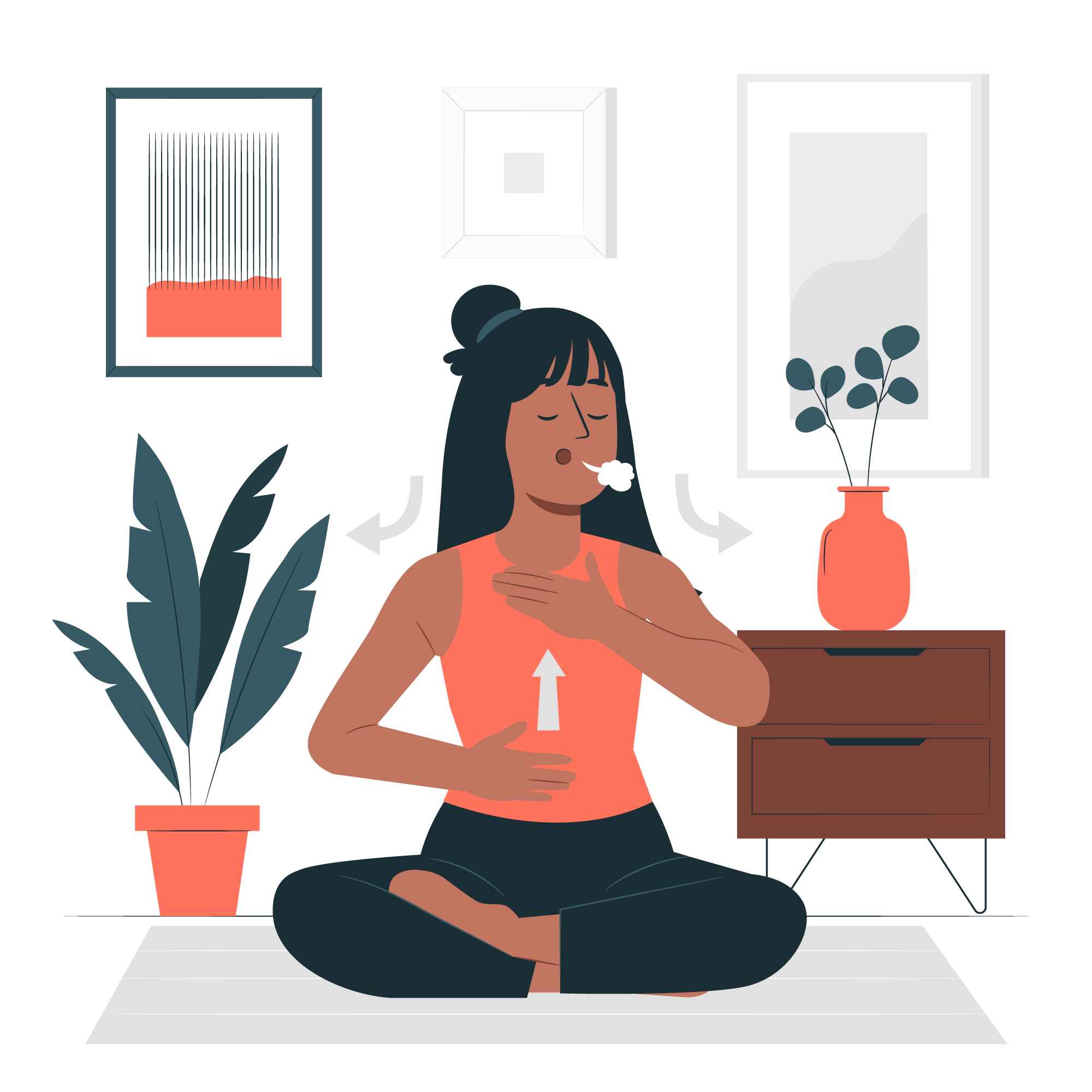How To Increase Lung Capacity With Breathing Exercises?

Medically Reviewed By
Dr Divya Rohra
Written By Kirti Saxena
on Sep 2, 2023
Last Edit Made By Kirti Saxena
on Jan 9, 2025

Did you know that respiratory diseases are the world's third leading disease that causes death? Chronic respiratory disorders were estimated to be around 6% of all deaths in India in 2022. Your lungs need exercise to stay healthy and function normally. Our body needs oxygen for survival. Every activity in the body depends on oxygen, including the metabolic functioning of cells. Increasing lung capacity through breathing exercises can help improve lung function, oxygenate your body more effectively, and enhance your endurance. However, regularly performing breathing exercises can help maintain the health of your lungs by promoting proper air exchange, preventing lung congestion, and supporting the clearing of mucus and toxins from the airways.
This blog will discuss breathing exercises that can help reduce shortness of breath and increase your lung capacity.
Read our Related Blogs:-
- https://redcliffelabs.com/myhealth/health/lungs/5-common-lung-diseases-causes-diagnosis-prevention-treatment/
- https://redcliffelabs.com/myhealth/food-and-nutrition/food-for-lungs/anti-pollution-diet-list-of-important-food-items-that-prevent-your-lungs-from-pollution/
- https://redcliffelabs.com/myhealth/lab-test/lungs-test/lung-cancer-prevention-symptoms-and-treatment/
5 Best Breathing Exercises to Improve Lung Function
Increasing lung capacity and practicing deep, controlled breathing ensures your body receives ample oxygen. Lung breathing exercises are important for several reasons, as they can positively impact your respiratory health. Here are some breathing exercises to increase lung capacity:
Diaphragmatic Breathing (Deep Breathing)
What is diaphragmatic breathing?
It is also known as deep breathing or abdominal breathing, a technique involving the diaphragm, a dome-shaped muscle located at the base of the lungs, to facilitate a deeper and more efficient breath. This technique allows you to maximize the amount of oxygen entering your lungs and can help promote relaxation, reduce stress, and improve lung function.
How to do it?
- Sit or lie down in a comfortable position. You can place one hand on your chest and the other on your abdomen.
- Inhale slowly and deeply through your nose. As you inhale, focus on allowing your abdomen to rise and expand. Your chest should remain relatively still during this phase.
- Exhale gently through your nose or mouth. Try to make your exhalation slightly longer than your inhalation.
- Inhale deeply, allowing your abdomen to rise, and exhale slowly, letting it fall.
- Relax your shoulders and any tension in your body as you continue the deep breathing pattern. Repeat this process for several minutes.
Benefits of Diaphragmatic Breathing:
- Improved Lung Capacity
- Stress reduction
- Lower heart rate and blood pressure
- Enhanced oxygenation
- Respiratory Muscle Strength
Pursed Lip Breathing
What is pursed-lip breathing?
Pursed lip breathing is a breathing technique that helps to improve airflow and oxygen exchange in people with respiratory diseases such as chronic obstructive pulmonary disease (COPD) or asthma.
How to do it?
- Sit or stand in a relaxed posture. You can sit in a chair with your feet flat on the ground or lie down.
- Inhale gently and slowly through your nose for a count of two. Focus on filling your lungs with air, but avoid taking a forced deep breath.
- Pucker your lips as if you want to blow out a candle. Exhale slowly and evenly through your pursed lips for a count of four. The exhalation must be twice as long as the inhalation.
- Keep the breaths smooth and controlled. Avoid rushing the exhalation; focus on making it steady and even.
- Continue inhaling through your nose for two counts and exhaling through pursed lips for four counts. You can adjust the counts slightly based on your comfort level but maintain the 2:4 ratio for inhalation and exhalation.
Benefits of Pursed Lip Breathing:
- Improved Breathing Efficiency
- Enhanced Oxygenation
- Reduced Shortness of Breath
- Calming Effect
- Building Endurance
Box Breathing (Square Breathing)
What is box breathing?
Box breathing, also known as square breathing, is a simple and effective technique involving a specific pattern of breath control. It is called "box breathing" because the method follows a square-like pattern, with each breath phase held for an equal duration. This method can help reduce stress and anxiety and promote a sense of calm and focus.
How do you do it?
- Sit or stand in a relaxed posture.
- Begin by exhaling all the air from your lungs completely.
- Inhale slowly and steadily through your nose for a count of four seconds.
- After inhaling, hold your breath for a count of four seconds. During this phase, keep your body relaxed and your mind focused on your breath.
- Exhale slowly and evenly through your mouth for a count of four seconds.
- After exhaling, hold your breath again for a count of four seconds. This moment of pause creates a sense of stillness.
- Continue this pattern of inhaling for four seconds, holding for four seconds, exhaling for four seconds, and holding for four seconds.
Benefits of Box Breathing:
Box breathing can be done in various situations, such as when you're feeling anxious, before a stressful event, or simply as a relaxation technique during your daily routine.
- Stress Reduction
- Improved Focus
- Better Emotional Regulation
- Enhanced Self-awareness
Abdominal or belly Breathing
What is abdominal breathing?
It is also known as diaphragmatic or belly breathing, a technique that helps maximize the inhalation and exhalation of air. This technique encourages the expansion of the abdomen during inhalation and the contraction during exhalation, promoting more efficient and relaxed breathing.
How to do it?
- Sit or lie down in a comfortable position. You can place one hand on your chest and the other on your abdomen to help monitor your breathing.
- Inhale slowly and deeply through your nose. Focus on allowing your abdomen to expand outward as you breathe in.
- Exhale slowly and evenly through your nose or mouth.
- Continue the deep breathing rhythm, focusing on the rise and fall of your abdomen with each breath. Inhale deeply and slowly, allowing your belly to expand, and then exhale slowly, letting it contract.
Benefits of Abdominal Breathing:
- Improved Lung Capacity
- Reduced Stress and Anxiety
- Lowered Heart Rate and Blood Pressure
- Enhanced Respiratory Muscle Strength
- Improved Digestion
Rib stretch Breathing
What is rib stretch breathing?
It is also known as intercostal breathing, which focuses on expanding the rib cage during inhalation. The technique helps to increase the lung capacity and improve overall respiratory function.
How to do it?
- Sit or stand in a relaxed posture. You can place one hand on your chest and the other on your side below your ribcage to help you recognize your breathing patterns.
- Inhale slowly and deeply through your nose. As you inhale, focus on expanding your rib cage outward and to the sides.
- Exhale slowly and evenly through your nose or mouth. As you exhale, feel your ribcage naturally return to its resting position.
- Continue the rib stretch breathing rhythm, emphasizing the expansion of your ribcage with each inhalation and the gentle contraction with each exhalation. Inhale deeply, allowing your ribcage to widen, and then exhale slowly, allowing it to return to its resting state.
Benefits of Rib Stretch Breathing:
- Improved Lung Capacity
- Enhanced Respiratory Muscle Engagement
- Improved Posture
- Increased Oxygenation
- Stress reduction
- Better Breath Control
What is numbered breathing?
Numbered breathing is a technique that involves counting your breaths to regulate and control your breathing patterns.
This technique can help calm the mind, reduce stress, and promote relaxation.
How to do it?
- Sit or lie down in a relaxed posture.
- Start by taking a few normal breaths to settle into your breathing rhythm.
- As you inhale, mentally count to a specific number. Inhale slowly and deeply while silently counting to your chosen number. For example, "Inhale...2...3...4..."
- At the top of your inhalation, briefly hold your breath for the same number of counts you used for the inhalation.
- Exhale slowly and evenly for the same number of counts. Continue counting silently as you exhale.
- At the bottom of your exhalation, pause and hold your breath for the same number of counts.
- Continue this pattern of inhaling, holding, exhaling, and pausing. Try to maintain a smooth and relaxed rhythm.
Benefits of Numbered breathing:
- Stress Reduction
- Improved focus
- Regulated breathing
- Better breath control
What Causes Low Lung Capacity?
Low lung capacity, also known as reduced lung function or diminished lung volume, can be caused by various factors, including:
- Smoking causes reduced lung capacity
- Exposure to Environmental Toxins
- Severe respiratory infections, such as pneumonia or tuberculosis,
- Aging factor
- Genetic factors
- Chronic lung diseases
- Sedentary lifestyle
- Obesity
- Thoracic Deformities
Tips For Keep Your Lung Healthy
Maintaining healthy lungs is important as your lungs play a vital role in providing oxygen to your body and expelling carbon dioxide. Here are some tips to help keep your lungs healthy:
- Don’t smoke
- Practice good hygiene
- Maintain a healthy diet
- Stay hydrated
- Practice good posture
- Exercise daily
- Improve air quality
- Eat food rich in antioxidants and fiber
- Get vaccinations
- Manage stress
- Regular checkups
Takeaway
Practice breathing exercises regularly for improvements in your lung capacity and overall well-being. Regular exercise and a healthy lifestyle support lung health. If you suspect you have reduced lung capacity or are experiencing symptoms such as shortness of breath, coughing, or wheezing, consult your healthcare professional. Early detection can help to prevent further decline in lung functioning.



